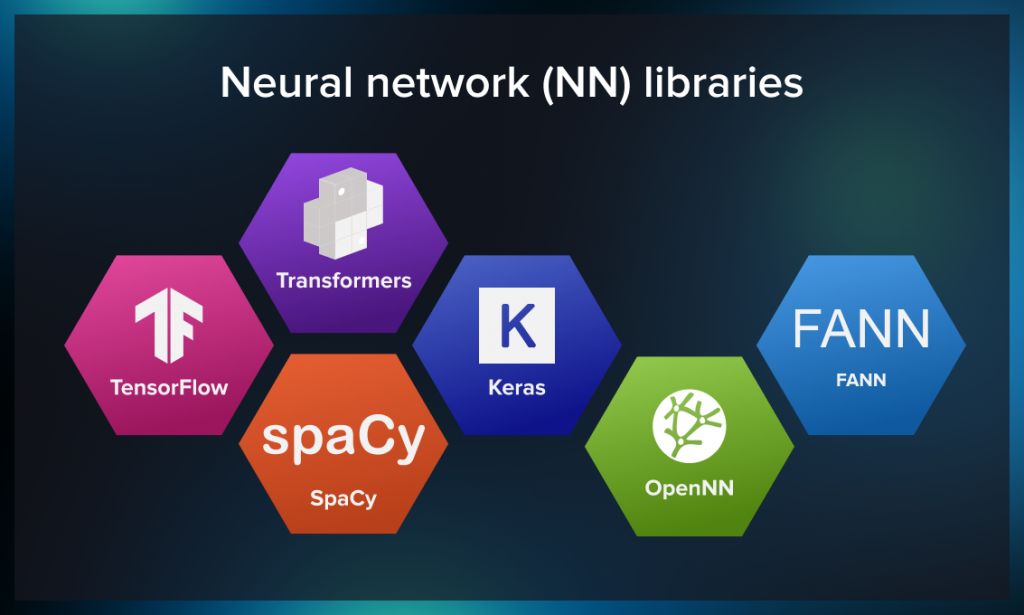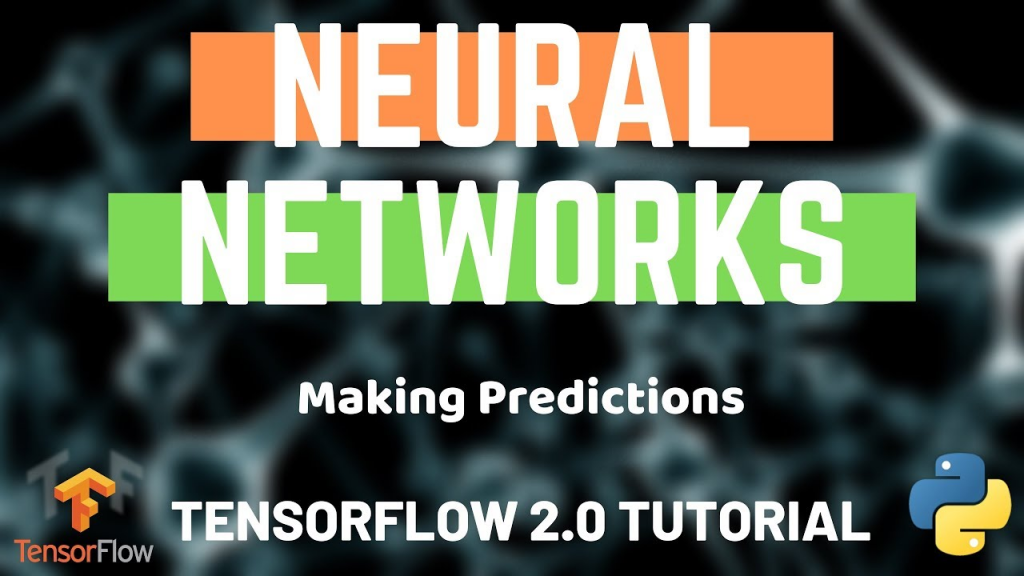What are Neural Network Libraries?

Neural Network Libraries are software tools and frameworks that provide functionalities for building, training, and deploying neural networks. These libraries are designed to assist researchers and developers in implementing various neural network architectures and deep learning models. Neural network libraries abstract the complexity of low-level operations, making it easier to work with complex neural networks and leverage the power of deep learning for a wide range of applications.
Top 10 use cases of Neural Network Libraries:
- Image Classification: Classifying images into predefined categories, such as recognizing objects or identifying patterns.
- Object Detection: Detecting and localizing objects within an image or video.
- Natural Language Processing (NLP): Building language models, sentiment analysis, machine translation, and chatbots.
- Speech Recognition: Converting spoken words into text or commands that a computer can understand and execute.
- Recommendation Systems: Creating personalized recommendations for users based on their preferences and behaviors.
- Computer Vision: Solving computer vision tasks, such as image segmentation and facial recognition.
- Anomaly Detection: Identifying unusual patterns or outliers in data.
- Time Series Prediction: Predicting future values in time series data, such as stock prices or weather forecasts.
- Generative Models: Generating new data, such as images or text, using generative adversarial networks (GANs) or variational autoencoders (VAEs).
- Reinforcement Learning: Implementing and training agents using deep reinforcement learning algorithms.
What are the feature of Neural Network Libraries?

- Neural Network Layers: Libraries provide a wide range of pre-built layers like dense, convolutional, recurrent, and pooling layers.
- Activation Functions: They offer various activation functions like ReLU, sigmoid, and tanh.
- Optimizers: Libraries support different optimization algorithms like stochastic gradient descent (SGD), Adam, and RMSprop.
- Loss Functions: They provide various loss functions for different tasks like mean squared error, cross-entropy, and hinge loss.
- Regularization Techniques: Neural network libraries support dropout, L1 and L2 regularization, and batch normalization.
- GPU Acceleration: Many libraries can leverage GPUs for faster training and inference.
- Model Saving and Loading: Libraries provide methods to save trained models and load them for future use.
- Transfer Learning: Some libraries support transfer learning, allowing the use of pre-trained models as a starting point for new tasks.
How Neural Network Libraries Work and Architecture?

The architecture of neural network libraries can vary based on the specific library and its functionalities. Generally, they involve the following steps:
- Model Definition: Define the architecture of the neural network by specifying the layers and their configurations.
- Model Compilation: Compile the model by specifying the optimizer, loss function, and evaluation metrics.
- Data Loading: Load and preprocess the training and validation data.
- Training: Train the neural network on the training data using the specified optimizer and loss function.
- Evaluation: Evaluate the trained model on the validation or test data to measure its performance.
How to Install Neural Network Libraries?
To install neural network libraries, you can use package managers like pip or conda. Some popular neural network libraries include TensorFlow, PyTorch, Keras, and MXNet.
For example, For install TensorFlow using pip, you can use the below-given command:
pip install tensorflowFor PyTorch, you can use:
pip install torch torchvisionFor Keras, you can use:
pip install kerasBefore the neural network library installation process, first, be sure about you have the required dependencies, such as deep learning frameworks, and other required packages or libraries.
Please refer to the official documentation and websites of the specific neural network library you wish to install for detailed and up-to-date installation instructions.
Basic Tutorials of Neural Network Libraries: Getting Started
Below are step-by-step basic tutorials for getting started with popular Neural Network Libraries:

Neural Network Library: TensorFlow
- Installing TensorFlow:
- Install TensorFlow using pip for Python:
pip install tensorflow.
2. Creating a Neural Network Model:
- Import TensorFlow and other essential libraries.
- Define the layers and architecture of the neural network using the Keras API.
3. Compiling the Model:
- Compose the model by specifying the optimizer, evaluation metrics, and loss function.
4. Loading and Preprocessing Data:
- Prepare the data for training and validation using TensorFlow’s data utilities.
5. Training the Neural Network:
- Train the model on the data using the
fitfunction, specifying the number of epochs and batch size.
6. Evaluating the Model:
- Evaluate the trained model on the test data to measure its performance.
7. Using the Trained Model:
- Apply the instructed model to make predictions on new data.
Neural Network Library: PyTorch
- Installing PyTorch:
- Install PyTorch using pip for Python:
pip install torch.
2. Creating a Neural Network Model:
- Import PyTorch and other necessary libraries.
- Define the layers and architecture of the neural network using PyTorch’s
nnmodule.
3. Defining the Loss Function and Optimizer:
- Choose a loss function (e.g., cross-entropy, mean squared error) and an optimizer (e.g., SGD, Adam).
4. Loading and Preprocessing Data:
- Prepare the data for training and validation using PyTorch’s data utilities.
5. Training the Neural Network:
- Train the model on the data using a loop that iterates through the data and updates the model’s parameters.
6. Evaluating the Model:
- Evaluate the trained model on the test data to measure its performance.
7. Using the Trained Model:
- Apply the instructed model to make predictions on new data.
Neural Network Library: Keras
- Installing Keras:
- Install Keras using pip for Python:
pip install keras.
2. Creating a Neural Network Model:
- Import Keras and other necessary libraries.
- Define the layers and architecture of the neural network using the Sequential or Functional API.
3. Compiling the Model:
- Compose the model by specifying the optimizer, loss function, and evaluation metrics.
4. Loading and Preprocessing Data:
- Prepare the data for training and validation using Keras’ data utilities.
5. Training the Neural Network:
- Train the model on the data using the
fitfunction, specifying the number of epochs and batch size.
6. Evaluating the Model:
- Evaluate the trained model on the test data to measure its performance.
7. Using the Trained Model:
- Apply the instructed model to make predictions on new data.
These tutorials will help you get started with these popular neural network libraries. As you progress, you can explore more advanced features and techniques to build and train more complex neural network models for various machine learning tasks.
- Why Can’t I Make Create A New Folder on External Drive on Mac – Solved - April 28, 2024
- Tips on How to Become a DevOps Engineer - April 28, 2024
- Computer Programming Education Requirements – What You Need to Know - April 28, 2024

